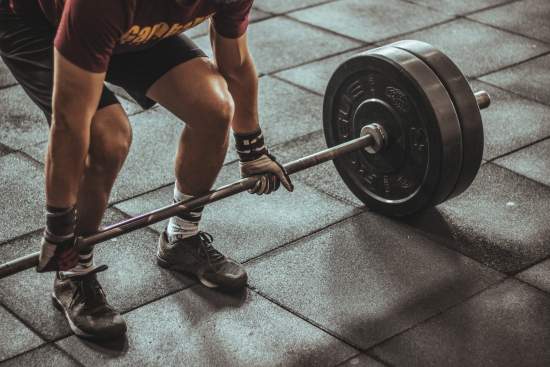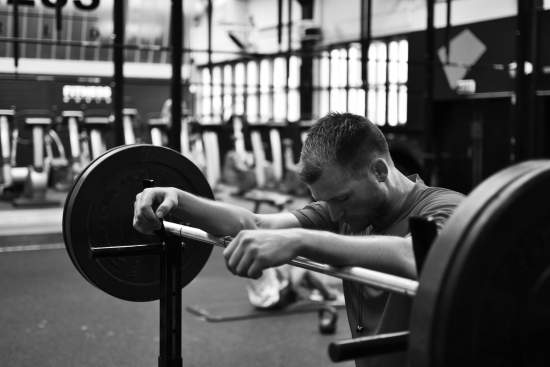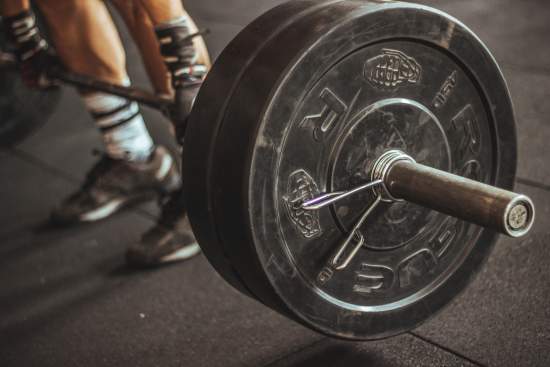How To Gain Muscle Mass: The Complete Guide (+ 3 Crucial Things To Understand)
You want to gain muscle mass but you don’t know where to start?
You want to build muscle but you feel completely lost in the amount of information available on the internet?
You want to know the best ways to build a more muscular physique?
You’ve come to the right place.

Unfortunately, that’s not enough to get some solid results.
I remember when I started to workout, I would read a lot about the subject. Books, websites, forums… I would watch tons of videos… And so on.
You might say: “That’s great! What’s the problem?”
And in some way you would be right: it is crucial that you strive to always learn new things and acquire more knowledge.
Sure.
But for a beginner who needs to take action to see results, it can be counter-productive.
Back in time, I couldn’t see the big picture. I had no critical mind as I have now.
I was ready to believe anything as long as it would help me to build muscle.
As a result, I would often change my fitness plan. As often as several times per month!
Why?
For instance because the review on this new program seemed way better than the review on the program I had started 2 weeks ago.
Things like that…
In the end, efforts and commitment were there, but not the results.
Moral of the story:
Instead of trying all the stuff available out there (even if the latter seem so hyped), beginners should focus on some basics that will really get them some results.
There are some key concepts that you must master and incorporate to your routine.
My vision of fitness and bodybuilding has evolved over time to become what you’re about to read here.
For me, fitness and bodybuilding does not end when you leave the gym, but it continues in the kitchen, on my bed, in front of my laptop…
Muscle gains occurs on different levels:
Level 1: Weight lifting training
First and foremost, in order too gain muscle mass, you must train the right way.
Exercises to build muscle mass:
To cause muscle growth, you must put some tension on your muscles.
And the best way to put some solid tension on your muscles is to perform some heavy compound exercises:
- Bench press
- Incline press
- Shoulder press
- Pull-Ups
- Chin-Ups
- Squats
- Dead Lifts
- Dips
- Etc.
Heavy compound movements are key to build a strong body.
They involve major muscles groups and are very effective to develop an harmonious physique as well as a powerful nervous system.
These are the exercises you should focus on.
Once you’ve pushed hard on 2-3 of these exercises, you can do a few isolation exercises, but not before.
Isolation exercises are not necessary to build a strong and muscular body.
Heavy compound exercises, on the other hand, are.
If you only do isolation exercises and no heavy compound exercise, build some muscle will take you a long time.
Now let’s talk about the second point:
Workout intensity:
Intensity is one of the factors that can largely impact your gains.
Workout intensity is something that elicit a fair amount of debate.
When I started weight lifting, I didn’t know shit about it.
I would do what I was told, without asking questions.
That’s not surprising, I was a rookie.
Looking back, I should have been asking more questions and dig a little deeper.
I would have made progress faster.
So…
How to stimulate muscle hypertrophy?
There are 3 ways to stimulate muscle growth:
1. Progressive overload:
Progressively increasing the tension on your muscle fibers.
Which makes sense: if you always lift the same weights, your muscles will have no cause to grow.
2. Muscle damage:
Don’t get me wrong, I’m just referring to micro damages induced by muscular contraction that occurs during physical exertion.
During rest – and with proper diet – muscle heals and grow.
3. Myocytes and muscle fibers fatigue:
No matter what some people may claim, training to failure is a way to stimulate muscle growth.
That being said, your shouldn’t do it too much. You should avoid training to complete failure, since it is very taxing for the nervous system and make your tired for the rest of your workout (and thus unable to hit it hard).
Well…
So far it does’t sound very complicated, does it?
Sure. But there are some things you should understand and remember.
For instance:
When you lift light weights, those conditions are not met. You’re only going to create muscular damage.
Sure, you stimulate muscle growth, but just a little. It’s far from being optimal.
To build muscle mass and get stronger, you should primarily increase the tension exerted on your muscle fibers.
It took me a while to understand this.
I thought that it was enough to exhaust the muscle through a high volume training…
But that’s not how it works.
And fortunately I’ve come to completely change the way I was training.
I went from doing tons of isolation exercises in the 8-12 rep range to doing a few yet effective heavy compound exercises in the 4-8 rep range.
And it changed everything.
I god some solid results.
I quickly got bigger and stronger.
To build muscle mass, the key is to do heavy compound exercises.
Doing so, you will not only gain strength, but also muscle mass.
How many reps should I do in a set?
This is a relevant question, and we’re going to answer it here.
You’ve come to understand that in order to build muscle mass, you should train with heavy weight.
However, each person interprets this differently.
Each person is not going to interpret heavy the same way.
For instance, lifting a certain weight for 10 reps may be considered heavy by some people.
To avoid any confusion of this kind, I’ll be crystal clear.
But before jumping in with the answer, let me tell you about this study, conducted on two groups of people.
The goal of this experiment was to determine which group of people would gain the most muscle mass.
Each group trained 4 times a week, by doing sets of heavy compound exercises such as bench press, squats, dead lifts, shoulder press…
Both groups did the exact same number of sets of these exercices.
However, the number of repetitions in the sets was not the same whether you were in group 1 or 2:
- Group 1: 10-12 reps performed at 70% of the 1RM
- Group 2: 3-5 reps performed at 90% of the 1RM
People in both groups followed the same diet.
After 8 weeks of training, scientists observed that people in group 2 had gained more muscle mass than people in group 1, to a significant extend.
When we look closer, the results of this study were pretty much predictable regarding strength gains.
But people in group 2 weren’t expected to gain more muscle mass than people in group 1.
Scientists explained this by noticing that:
- Tension exerted on muscles was more important in group 2
- There was a better activation of muscle fibers in group 2
That’s why:
Ideally, you should perform sets in the 4-6 rep range, at 80% of your 1RM.
Now that you know how many reps you should do and at which intensity, you’re probably wondering:
What are the best exercises to gain muscle mass?
In order to answer this question, let’s play a little guessing game:
If you had to choose between a workout with only compound exercises and a workout with only isolation exercises, which one would you choose?
If you’ve been paying attention to what we saw above, you already know the answer:
To build muscle mass, you should activate as many muscle fibers as you can. That’s why you should perform compound exercises.
But in spite of this I do not mean to say that you shouldn’t perform any isolation exercises, far from it.
Just remember that you must give priority to heavy compound exercises and that isolation exercises should account for no more than 30% of your exercises.
How many workout should you do in a week?
You’ve probably heard things like:
“The more you go to the gym, the more muscle mass you’re going to build.”
This is wrong.
I know some guys who train 3 hours a day, 6 days a week, and you couldn’t tell they workout.
Forget about this shitty advice.
In fact, there’s not a good nor a bad answer to this question.
Your training frequency is entirely up to you.
Let me explain:
Your training frequency should be chosen based on the intensity of your workouts and your recovery.
The more intense your workouts are, the more recovery you’ll need.
Understand this: you shouldn’t overtrain.
Overtraining leads to muscle catabolism and nervous breakdown.
Which will prevent you from gaining muscle.
“Alright, I get it, but I feel a bit lost… That doesn’t tell me how many times I should workout in a week?”
Well, it all depends on the muscles you’re going to train and on the intensity of your workout.
You can go to the gym 5 times a week if you don’t train every muscle group at each workout.
The more you train a muscle group during a workout, the less you’ll be able to train effectively this muscle group again during the week.
Plain and simple.
To give you and idea, scientists estimated that:
For a training in the 4-6 rep range at 80% of your 1RM, it is best to perform 30 to 60 reps for each muscle groups spread over 2 to 3 weekly workouts.
You understand now why training frequency is not a relevant factor when it comes to muscle growth: what matters is the weekly volume.
Let’s now see some concrete examples of workout plans…
I’m going to give you 2 examples of training routine.
The first one is a 3-day split (that is to say 3 workouts per week), whereas the second one is a 5-day split (that is to say 5 workouts per week).
Routine A: 3 workouts/week
Day 1: back + abs
- Dead lift: 3 sets
- Weighted pull-ups (or weighted chin-ups): 4 sets
- Dumbbell Rows: 4 sets
- Biceps curl: 4 sets
- Abs
Day 2: chest + calves
- Incline press: 4 sets
- Bench press: 4 sets
- Shoulder press: 4 sets
- Lateral raises: 3 sets
- Weight dips: 4 sets
- Calf raises: 4 sets
Day 3: legs + abs
- Squats: 4 sets
- Leg press: 4 sets
- Dead lift: 4 sets
- Calf raises: 4 sets
- Abs
This routine is a very basic routine consisting mainly of compounds exercises.
This routine is very effective to gain muscle fast.
Just make sure to not train two days in a row: rest at least 48h between two workouts.
And take the time to warm up properly at the beginning of each workout.
When training in the 4-6 rep range at 80% of your 1RM, it is recommended to rest at least 2-3 minutes between each set.
Routine B: 5 workouts/week
Day 1: chest + abs
- Incline press: 3 sets
- Bench press: 3 sets
- Weighted dips: 3 sets
- Abs
Day 2: back + calves
- Deadlift: 3 sets
- Dumbbell row: 3 sets
- Weighted pull-ups (or weighted chin-ups): 3 sets
- Barbell shrug: 2 sets
- Calf raises
Day 3: shoulders + abs
- Shoulder press: 3 sets
- Lateral raises: 3 sets
- Bent over flyes: 3 sets
- Abs
Day 4: legs
- Squats: 3 sets
- Leg press: 3 sets
- Dead lift: 3 sets
- Abs
Day 5: upper body + abs
- Incline press: 3 sets of 8-10 reps with 1-2 min of rest between rests
- Biceps curl: 3 sets
- Bench press: 3 sets
- Hammer curl: 3 sets
- Skull crusher: 3 sets
- Abs
As with routine A, it’s recommended to take 2-3 minutes of rest between sets when performing exercises with heavy weights (in the 4-6 rep range).
Whether you follow routine A or routine B (or any other routine), your goal is to lift heavier at each workout.
To do so, you’re going to progressively increase the weight you’re lifting. First on your first set of the exercise, then on your second set, then on your third, fourth sets… And then again on your first set, and so on.
That’s how you’ll gain muscle mass in an effective way.
If you struggle to make progress in the gym, it’s probably that you’re not eating enough.
If that’s the case, eat more. But beware of not gaining more than 5 pounds per month, you’re goal in to gain muscle with a minimum of fat (more on that below).
Are you using the proper form?
In no way should you give up proper movement in favor of lifting heavier.
Poor form makes the exercise less effective and leads to injury.
Believe me: it’s better to work properly by lifting 20 pounds for your biceps curl than lifting 30 pounds and swinging your arms too much.
Not to mention the fact that if your movement is poor you’re not impressing anyone.
In case you have a doubt on a movement, feel free to ask the muscle guys of your gym about it. They’re usually quite helpful and nice.
Level 2: Diet
If you don’t follow a proper diet, you won’t get results (at least not in the long run), no matter how much you train.
To build muscle mass, you must eat enough.
You should eat more than what your body needs to be functional.
Building muscle requires energy.
You should eat at a surplus of 250-500 calories per day on average.
Counting calories and macronutrients can be quite difficult, especially if you often eat out.
There’s a way to make things easier: you can eyeball how much you eat each day.
This method is quite easy but requires a weekly monitoring:
For instance, if you were used to eat for lunch one portion of rice with a steak, then eat 1.5 portion of rice with 2 steaks.
In the end, if you increase the amounts of food you eat for your 3 main meals of the day, you end up eating the calorie surplus you need.
However…
You shouldn’t exceed the calorie surplus your body needs to build lean mass. Because if you eat too much, you’re going to gain fat as well as muscle.
That’s why you should check your weight, your waist and your chest circumference (on a weekly basis or so).
The first rule is that your waist shouldn’t expand more than your chest.

That’s how you’re going to gain muscle without fat (or with a minimum of fat), without having to bother counting calories.
Last but not least:
In order to build muscle mass, you should eat enough proteins:
Protein intake – and therefore the presence of amino acids into your blood – is going to cause an anabolic response in your organism.
Amino acids are going to be used to build muscle fibers.
For people working out, it is recommended to eat 0,9g/pound of bodyweight on average.
Which means that if you weight 180 pounds, you should eat approximately 180 x 0,9 = 162g of proteins per day.
You’ll find proteins in eggs, fish, meat, cheese, etc.
Level 3: Rest
You could eat and train day and night, but if you don’t have sufficient recovery, you’re not going to see results.
It is during the night that your body produces and releases hormones that are necessary for muscle growth.
That’s why it is recommended that you sleep a solid 7-8 hours every night.

If you do too much sport alongside your workouts, you could impair muscle growth.
To repair muscle tissues, your body needs a lot of energy.
Muscle growth can be impeded if you exhaust your body by doing intensive physical activities the day after your workout.
If you do an intensive sport alongside working out, it’s better to space your workouts apart and to use some supplements that can help your body to recover, such as glutamine, BCAAs, or even a weight gainer powder.
You don’t build a muscular physique overnight:
Don’t let yourself be dazzled by what you may see on the internet or in the gym.
Like for instance this guy who gained 50 pounds of lean muscle mass in 2 years…
Building muscle is a process that takes time.
Your body has its limits and can’t go as fast as some people would like you to believe.
The good news is that you’re going to make steady progress and appear better and better over time.
Each month you’re going to see some changes in your body.
And pretty quickly you’ll get a much more muscular physique than you have now.
Which will make you look more solid (in fact you’ll also be more solid, since you’ll have more strength and a more efficient nervous system).
[MUST-READ] Be DOMINANT with Women: Know How to MASTER Them (In Everyday Life) to Make Them Fantasize About You
If you enjoyed this article (and even if you didn’t), you’ll love this other extensive post I recently published:
There’s something you need to understand:
Women want to be submissive.
They fantasize about sexual submission.
And when they meet a dominant man who has the potential to satisfy their submission fantasies, it makes them desire him intensely.
Sounds shocking or surprising to you?
Keep reading…
Today, you’re going to learn how to master women in a way that will turn them on.
You’re going to learn how to dominate women to make them wet with desire.
And NOT just in bed:
You’re going to implement this in other contexts and environments, be it after an approach, on a date, at a party, and more.
You’re going to implement this in your everyday life with the women you like so that they see you as a powerful dominant male who is able to satisfy their desires and take them to seventh heaven.
These actions you’re going to implement daily with the girls you want will lead them to see you as THE man to date.
You’ll stand out.
Women will see you as a potential lover and as a good lay (and that’s a bit of an understatement).
However, there are things you need to understand first.
You’ve got to be ready to try certain things that are a bit bold (more or less depending on the girl and the situation).
It's all there:
Stay solid,
Jack






